I'm looking to
1: detect a button
2: determine a winner based on color of the button
It seems like template matching is what I should be doing, but that works in greyscale. The buttons im detecting are green and red, but look pretty much identical when grayscale. my idea was if I subtract two color channels out of the image and the two templates that when I convert everything to grayscale the two template images will look different and result in diverging scores.
In practice it isnt really working out that way. I've fiddled quite a bit with this and either both templates score very high, or they dont detect the button properly at all. I can't get a divergence.
I'm brand new to OpenCV, so it's possible my approach is just not good. It's equally likely what I'm writing is not doing what I think it is. Let me know what you think. I've included my code and the source images I'm using.
import cv2
import numpy as np
from matplotlib import pyplot as plt
dire = cv2.imread('dire.jpg')
dire_template = cv2.imread('dire_template.jpg')
radiant = cv2.imread('radiant.jpg')
radiant_template = cv2.imread('radiant_template.jpg')
# color images are in the form BGR
# removing the B and G from the images makes the "continue" button more distinct between the two teams
# since dire is red while radiant is green
dire_red = dire.copy()
dire_red[:,:,0] = 0
dire_red[:,:,1] = 0
dire_template_red = dire_template.copy()
dire_template_red[:,:,0] = 0
dire_template_red[:,:,1] = 0
radiant_red = radiant.copy()
radiant_red[:,:,0] = 0
radiant_red[:,:,1] = 0
radiant_template_red = radiant_template.copy()
radiant_template_red[:,:,0] = 0
radiant_template_red[:,:,1] = 0
dire_gray = cv2.cvtColor(dire_red, cv2.COLOR_BGR2GRAY)
dire_template_gray = cv2.cvtColor(dire_template_red, cv2.COLOR_BGR2GRAY)
radiant_gray = cv2.cvtColor(radiant_red, cv2.COLOR_BGR2GRAY)
radiant_template_gray = cv2.cvtColor(radiant_template_red, cv2.COLOR_BGR2GRAY)
# plt.figure(0)
# plt.imshow(dire_red)
# plt.figure(1)
# plt.imshow(radiant_red)
# plt.figure(2)
# plt.imshow(dire_gray, cmap='gray')
# plt.figure(3)
# plt.imshow(radiant_gray, cmap='gray')
# plt.figure(4)
# plt.imshow(dire_template_red)
# plt.figure(5)
# plt.imshow(radiant_template_red)
# plt.figure(6)
# plt.imshow(dire_template_gray)
# plt.figure(7)
# plt.imshow(radiant_template_gray, cmap='gray')
# plt.show()
w, h = dire_template_gray.shape[::-1]
# All the 6 methods for comparison in a list
methods = ['cv2.TM_CCOEFF_NORMED',
'cv2.TM_CCORR_NORMED', 'cv2.TM_SQDIFF_NORMED']
for meth in methods:
print(f'{meth}: ')
# this would be the live image
img = dire_gray.copy()
method = eval(meth)
# Apply template Matching
dire_res = cv2.matchTemplate(img,dire_template_gray,method)
radiant_res = cv2.matchTemplate(img,radiant_template_gray,method)
dire_vals = [min_val, max_val, min_loc, max_loc] = cv2.minMaxLoc(dire_res)
radiant_vals = [min_val, max_val, min_loc, max_loc] = cv2.minMaxLoc(radiant_res)
print(dire_vals)
print(radiant_vals)
# print(f'min val: {min_val} max val: {max_val}')
# If the method is TM_SQDIFF or TM_SQDIFF_NORMED, take minimum
if method in [cv2.TM_SQDIFF, cv2.TM_SQDIFF_NORMED]:
top_left = min_loc
else:
top_left = max_loc
bottom_right = (top_left[0] + w, top_left[1] + h)
cv2.rectangle(img,top_left, bottom_right, 255, 2)
# plt.subplot(121),plt.imshow(res,cmap = 'gray')
plt.subplot(121),plt.imshow(dire_res)
plt.title('Matching Result'), plt.xticks([]), plt.yticks([])
# plt.subplot(122),plt.imshow(img,cmap = 'gray')
plt.subplot(122),plt.imshow(img)
plt.title('Detected Point'), plt.xticks([]), plt.yticks([])
plt.suptitle(meth)
plt.show()





